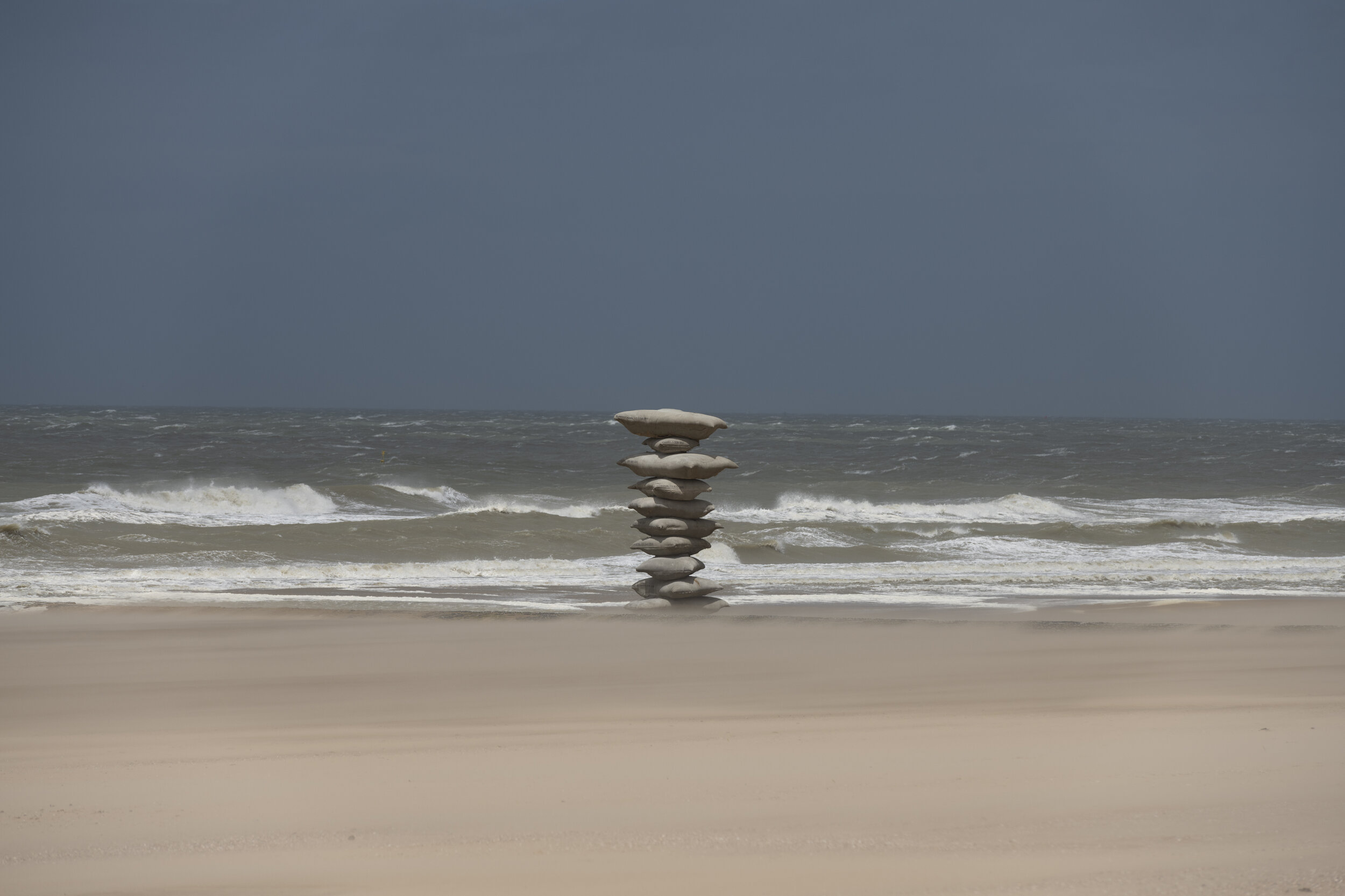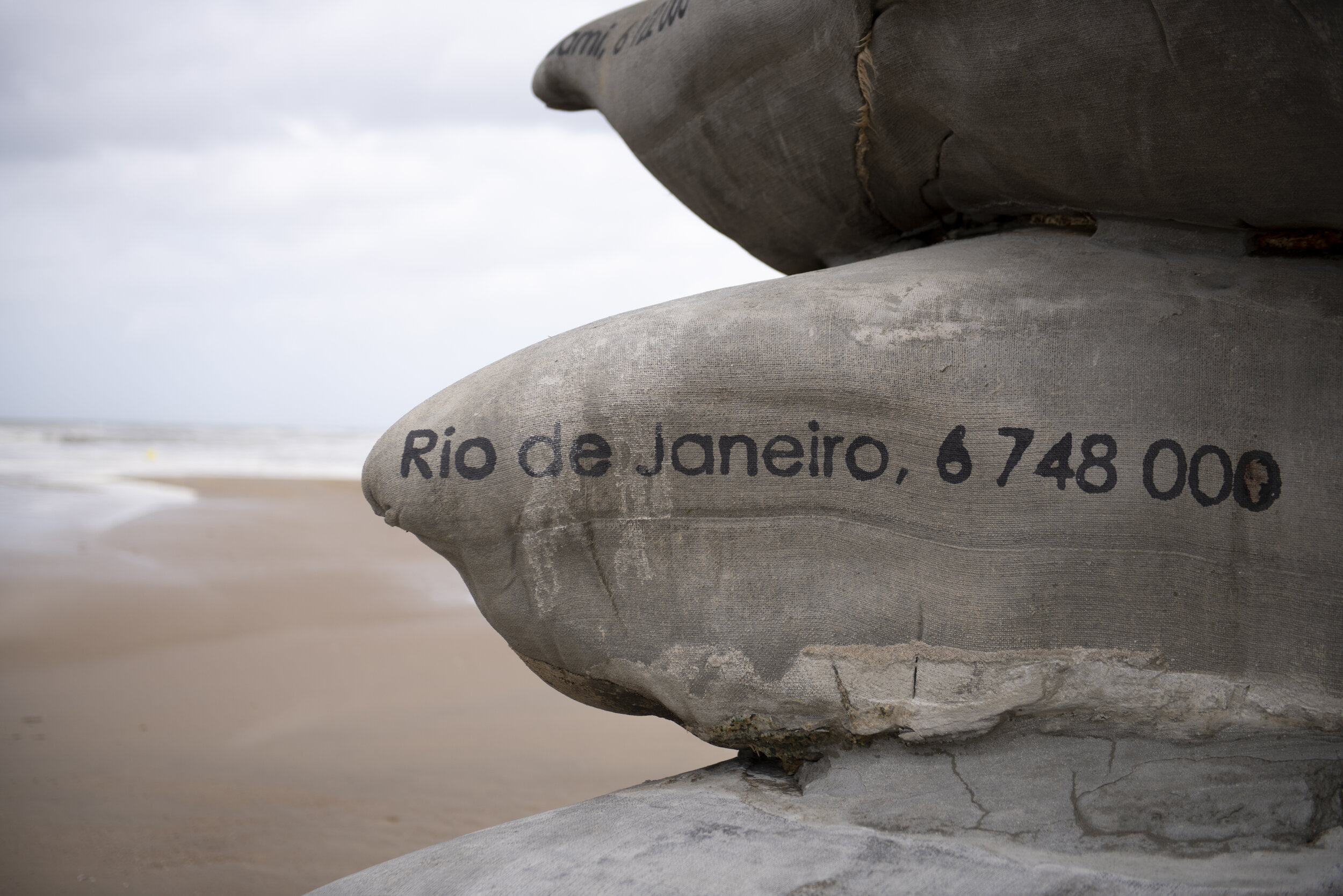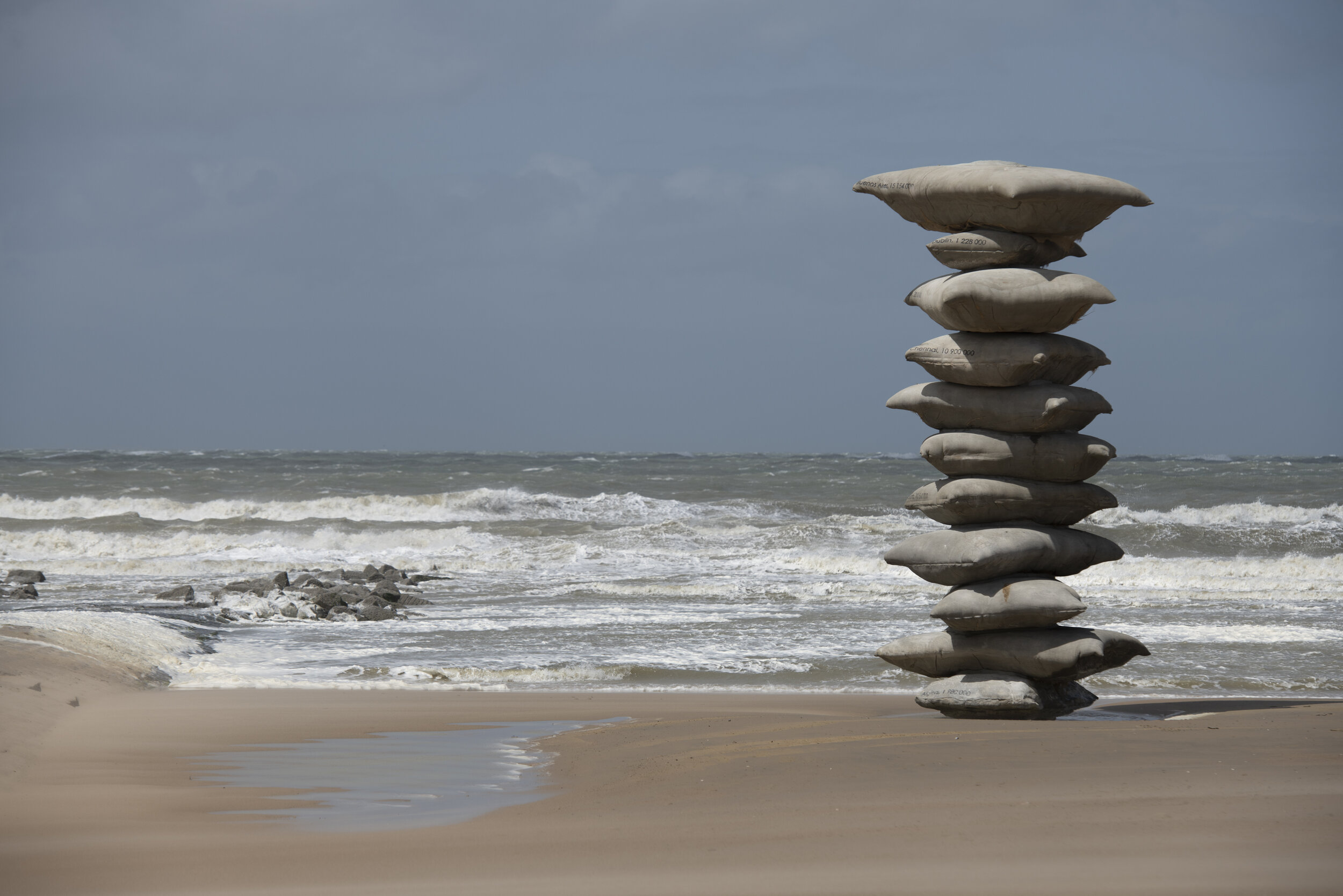“Since time immemorial, ‘cairns’ have graced our landscape. They crop up as piled-up stones; small towers as handy anchor points for lost hikers. They have a spiritual significance in various cultures. Above all in Japan they are seen as ceremonial or sacred places for reflection. Standing before the balancing stones, the individual acknowledges being at the mercy of nature and quietly whispers his*her wishes to it. In Ostend Rosa Barba has anchored such an outsized cairn. She imitates the stones by casting concrete in textile: a technique that promises flexibility for the architects and designers of tomorrow. The textile makes one think of the form of sandbags, with which Barba creates a type of imaginary barrier against the future rise in the sea level.
Each stone symbolises a city whose fate is threatened by climate change. World cities like Buenos Aires, Bangkok, Rio de Janeiro, Miami, Jakarta and Chennai are represented by a stone whose size corresponds to the number of people who live there. The position of each city in the tower reflects the actual altitude of the place, and shows the relation to the steadily rising sea level. The title references the poetess Emily Dickinson. The sight of the sea struck her dumb, literally robbing her of her words. At the same time it calls up an impossible image of a plundering of the sea, which belongs to no one.
Over the years Pillage of the Sea will gradually be submerged by the water. The sculpture forms a visual yardstick for climate change, while the ebb and flow of the tides determine how much of the artwork is visible at any given moment. With this work Rosa Barba reminds us to acknowledge our vulnerability and to revere nature.” —Heidi Ballet
Pillage of the Sea, 2021
Fabric-cast sandbags
6,50 x 2 x 1,71 m
Images: Installation view at 7th Beaufort Triennial, Ostend, Belgium, 2021. Photo: Filip Claessens © Rosa Barba


